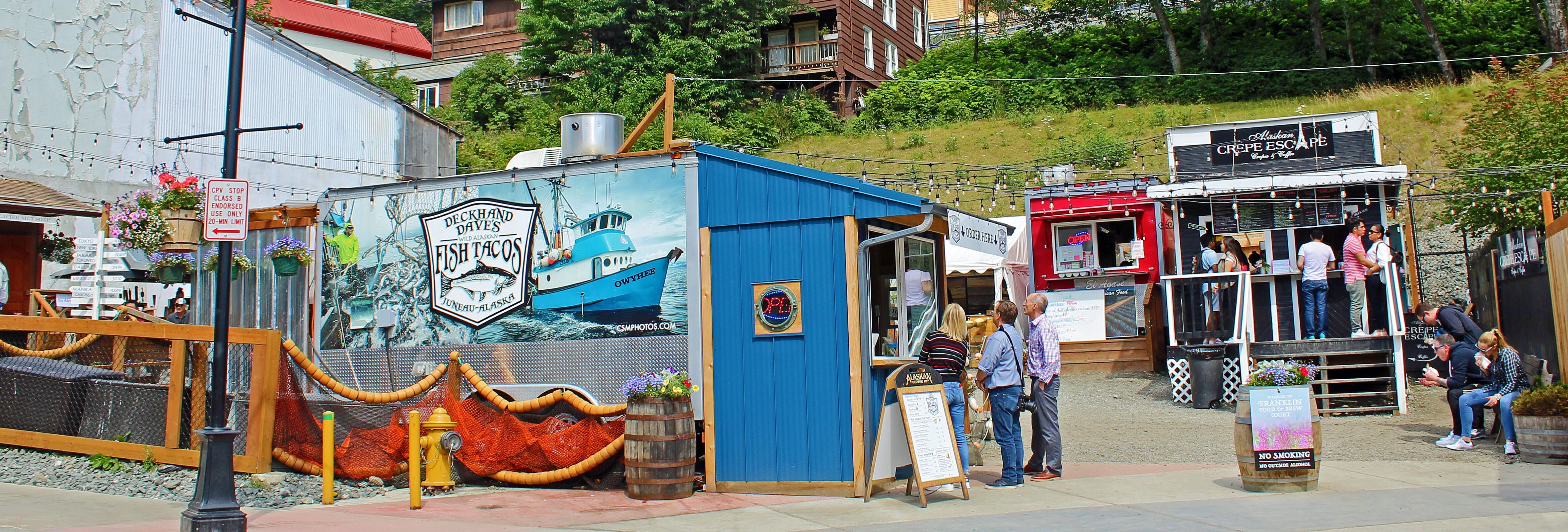Food Trucks

Building Permit
There are three things the Building Division wants to know about a food truck operation.
How are you getting your power?
How are you getting your water?
What are you doing with your gray water?
Setbacks
Food trucks must meet the setback requirements of the property they are located on. These requirements may be viewed by visiting our Table of Dimensional Standards, or by contacting a Planner.
Parking
One (1) space of on-site or on-street parking must be provided for every 200 square feet of restaurant space. Parking waivers may be available in certain districts. Please check with a Planner for parking requirements specific to your location.
Zoning District
Please note that food trucks are only allowed in certain zoning districts. Of the districts they are allowed, some will need Planning Commission review. Please review the specific zoning district information below, and if Planning Commission review is needed, allow 6-8 weeks for a decision.
Items to submit for permit application
Site Plan
One Line Drawing
Building Permit
Development Permit Application
Conditional Use Permit
Note on Zoning Districts
To view your zoning district, please visit our GIS Parcel Viewer, navigate to the property location on the map, and double click on the subject parcel.
Food Trucks Allowed with Building Permit: Light Commercial (LC), General Commercial (GC), and all Mixed Use (MU, MU2) Districts.
Food Trucks Allowed with Building Permit and Planning Commission Approval: D-10, D-15, D18, Rural Reserve (RR), and Industrial (I) Districts.
Food Trucks Not Allowed: D-1, D-3, D-5, D-10SF, and Waterfront Industrial (WI) Districts.
More Information on Building Permit
Most food trucks use a generator and a water tank, and hire a contractor to pump their gray water. However, some choose to hook up to city water/sewer, and connect to a nearby building for electricity. If you choose to go this route, please keep in mind the following things.
- When connecting to city water, a cross connection control device must be installed to prevent cross contamination.
- When connecting to a nearby electrical source, an inspector will need a one-line drawing showing the specifications of the connections, to ensure they meet code.
- Food trucks are on wheels and located on private or public parcels. Food trucks are not allowed in right-of-ways and sidewalks. If the food truck is seasonal and not on wheels, it is a temporary structure; please visit our Temporary Structure Webpage for more information. If interested in renting sidewalk space for a food cart, please visit our Sidewalk Vending Webpage.
